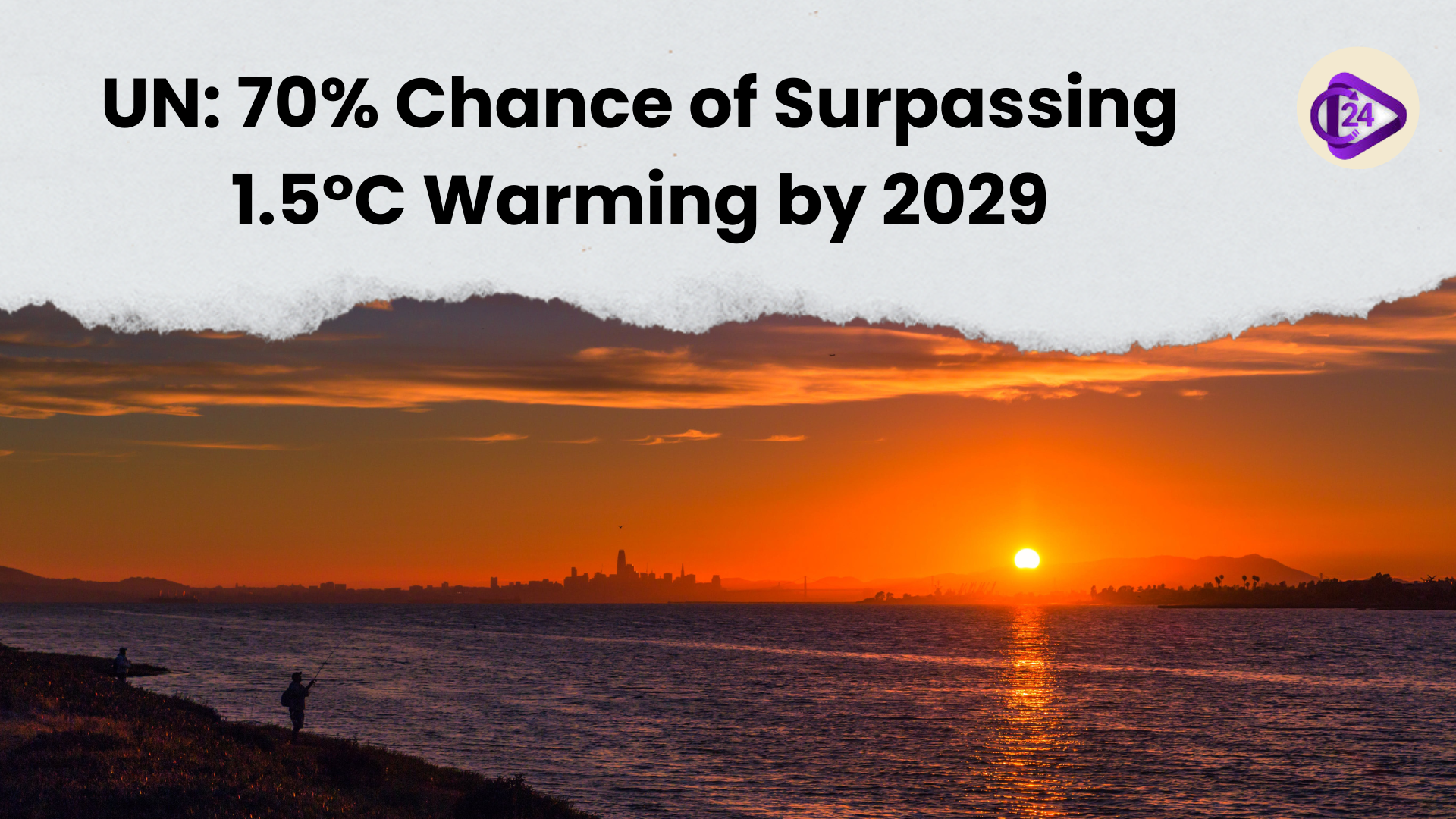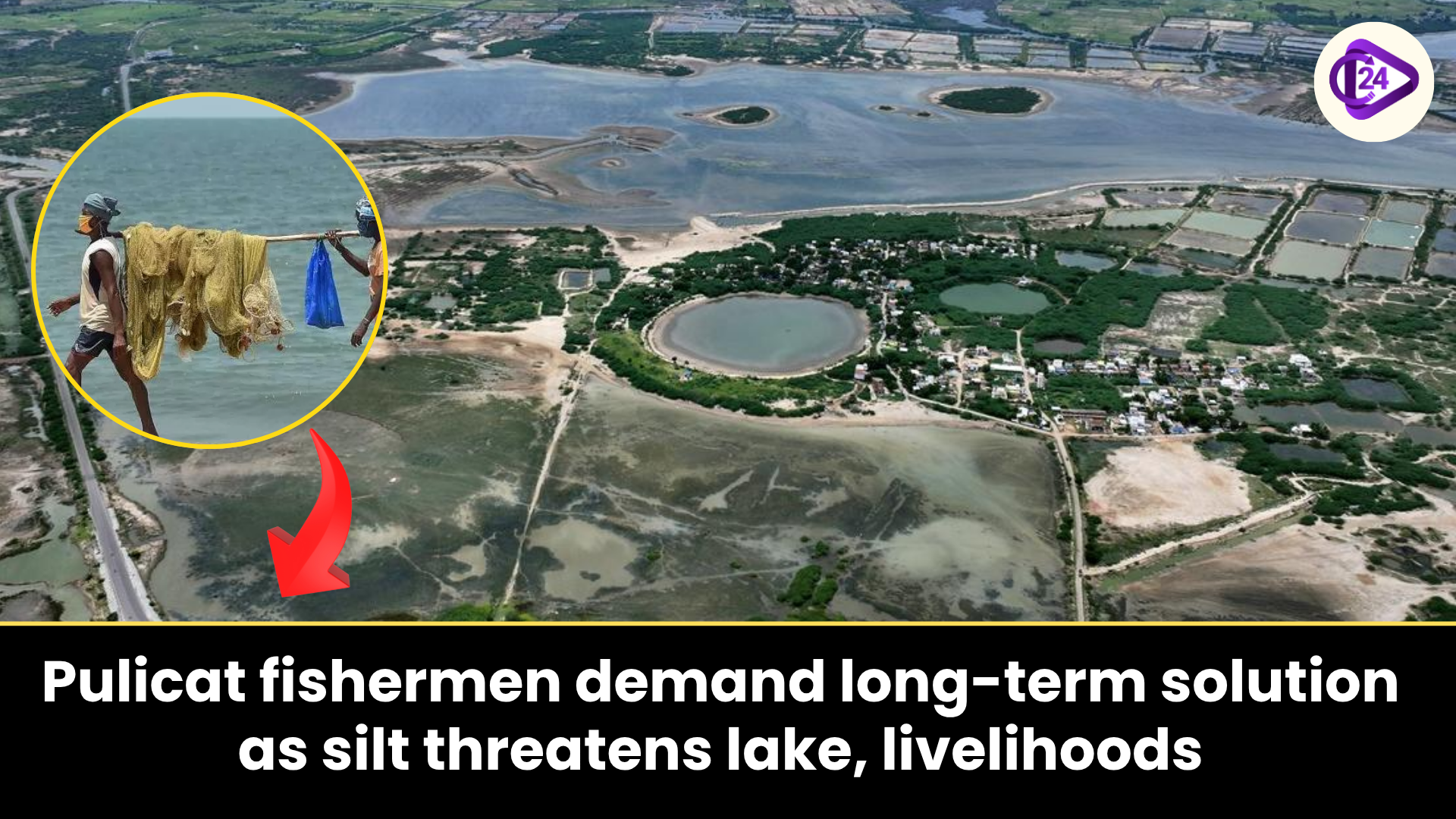
According to the World Meteorological Organization (WMO) as part of the United Nations warns of the increasingly serious climate crisis. With a 70% likelihood, according to the WMO, the world’s average temperature from 2025 to 2029 will be over the critical 1.5°C limit set by the Paris Agreement. The warning came after the world saw both years 2023 and 2024 with record temperatures and because scientists are concerned global efforts are not working. Growing levels of carbon dioxide and a strong dependence on fossil fuels are saw the main cause of this trend. Both rises in extreme weather, droughts and melting ice are happening at a quicker rate than expected, says the report.
Context:
-
The UN believes that there is up to a 70% chance that the planet’s temperature will rise by more than 1.5°C from 2025 to 2029.
-
Top scientists say it is unlikely that the 1.5°C target will be met because CO2 emissions are rising.
Key Points
70% possibility the planet will reach 1.5°C
-
The World Meteorological Organization (WMO) says there is a 70% likelihood that global average temperatures from 2025 to 2029 will be more than 1.5°C higher than the pre-industrial levels.
-
2023 and 2024 saw the two greatest global temperatures ever recorded, continuing a pattern of warming.
-
The 10 warmest years on record have occurred recently, indicating a consistent upward trajectory
The agreements and targets under climate change
-
In 2015, the Paris Climate Agreement looked to keep the rise in temperatures to less than 2°C if possible and as low as 1.5°C.
-
The target is designed according to what the world’s temperature was during the 1850–1900 pre-industrial period.
Temperature Range Expected for 2025-2029
-
Near-surface temperatures are projected to reach between 1.2°C and 1.9°C higher than their pre-industrial levels.
-
Eight out of ten experts agree it is likely to be the hottest year recorded.
80% Chance of Warmest Year Breaking Record
-
WMO says there's an 80% chance that at least one year between 2025–2029 will be warmer than 2024, the current warmest year on record.
-
It is not agreed upon how to monitor warming as it develops.
-
Certain experts predict that we will reach 1.5°C globally in the next 2–3 years.
About Global Warming
What is global warming?
Long-term rise in Earth's average temperature due to GHG accumulation from human activities.
Mechanism:
-
Earth catches and harnesses solar energy
-
Infrared heating
-
GHGs work to trap heat which causes the planet’s temperature to rise.-
-
The changes in the environment such as melting polar ice, make the warming stronger.
Data Points 2024
-
Temperature is 1.55°C warmer than temperatures before the industrial revolution.
-
More than 200 days above 1.5°C have been recorded this year (173 in 2023).
-
Polar melt is speeding up the rise in sea levels.
-
In 2024, emission reduction worldwide will be 2%, far below the 43% set for 2030
How the Government Works to Combat Global Warming
Global Initiatives:
-
Paris Agreement (2015): Keep warming at 2°C or less.
-
Green Climate Fund: Money for climate action in developing states
-
The UNFCCC & Kyoto Protocol are designed to help the world reduce its emissions.
Indian Initiatives:
-
NAPCC has set missions focused on solar, water and energy efficiency.
-
FAME Scheme helps to increase the use of electric vehicles.
-
Green Hydrogen Mission: Helps create clean energy
-
Through NAPCC, states are carrying out SAPCCs.
-
Targets applied to industries on energy efficiency.
Effects of Global Warming:
-
Human Impact:
-
Heat stress and those caused by vectors
-
A lack of food because crops have been wiped out
-
Climate migration
-
Economic disruption
-
Unfairness among regions and people
-
-
Environmental Impact:
-
Biodiversity loss
-
Polar ice and glaciers are melting.
-
Ocean acidification
-
Heatwaves, droughts and cyclones etc
-
Land becoming deserted and damaged
-
Way Ahead:
-
Speed Up Reducing Emissions: Increase solar and wind and stop using fossil fuels
-
Building strong infrastructure and early notice of disasters
-
Carbon capture and AI’s help in making things more efficient
-
Cooperation at a Global Scale: Keeps promises made under the Paris Agreement and helps vulnerable countries.
-
Region-Specific: Sustainable farming, improving cities with plants and afforestation
Conclusion
According to the UN, time is of the essence for the world to act decisively on climate change by immediately cutting greenhouse gas emissions and adopting renewable sources of power. The consequences of exceeding the 1.5°C limit would be especially harmful for the economy and nature in India and all over the world, customers said they have experienced. It is now necessary for policy leaders to make plans, embrace technological advances and choose sustainable approaches to handle these problems. The report invites us to maintain multilateral climate commitments under the Paris Agreement and demand justice for all nations during global COP summits.
UPSC Prelims Practice Question
Read the following statements concerning the recent WMO report on global warming:
- The WMO says that there is a 70% chance that average global temperatures from 2025 to 2029 will be higher than 1.5°C, as set by the Paris Agreement.
- The purpose of the Paris Agreement is to restrict global warming so it stays much lower than 3°C over pre-industrial times.
- Since 2010, every one of the 10 warmest years has been recorded.
Which of the above statements is/are correct?
- A) 1 and 3 only
- B) 2 only
- C) 1 and 2 only
- D) 1, 2 and 3
UPSC Mains Practice Question (GS Paper III – Environment)
Q.1 “It is forecast that the world will pass the 1.5°C barrier by 2029, leading to major troubles for humans, their economies and nature.” Assess what it would mean for Indian society if the 1.5°C degree threshold is crossed and showcase major national and global actions aimed at climate change and offer new ideas for progress. (250 words)



 India Conducts First-Ever DNA-Based Elephant Census, Reveals Population Decline by 25%
India Conducts First-Ever DNA-Based Elephant Census, Reveals Population Decline by 25% Maharashtra Gets India’s First Cooperative CBG Plant | 12 Tonnes Biogas Daily Production
Maharashtra Gets India’s First Cooperative CBG Plant | 12 Tonnes Biogas Daily Production Pulicat Fishermen Demand Long-Term Solution as Silt Threatens Lake and Livelihoods
Pulicat Fishermen Demand Long-Term Solution as Silt Threatens Lake and Livelihoods Reintroduction of Asian Giant Tortoise in Nagaland: A Step Towards Community-Led Biodiversity Conser
Reintroduction of Asian Giant Tortoise in Nagaland: A Step Towards Community-Led Biodiversity Conser Kaziranga in Assam Records Third-Highest Tiger Density in India
Kaziranga in Assam Records Third-Highest Tiger Density in India World Mangrove Day celebrated on 26th July
World Mangrove Day celebrated on 26th July Union Minister Inaugurates C-FLOOD: India’s Unified Inundation Forecasting System
Union Minister Inaugurates C-FLOOD: India’s Unified Inundation Forecasting System Indian-Made Chemotherapy Drugs Fail Quality Tests Globally
Indian-Made Chemotherapy Drugs Fail Quality Tests Globally Government to Launch ‘NAVYA’ Pilot Initiative for Skilling Adolescent Girls Under Viksit Bharat@2047
Government to Launch ‘NAVYA’ Pilot Initiative for Skilling Adolescent Girls Under Viksit Bharat@2047 AviList: The First-Ever Unified Global Bird Species Checklist Launched
AviList: The First-Ever Unified Global Bird Species Checklist Launched






